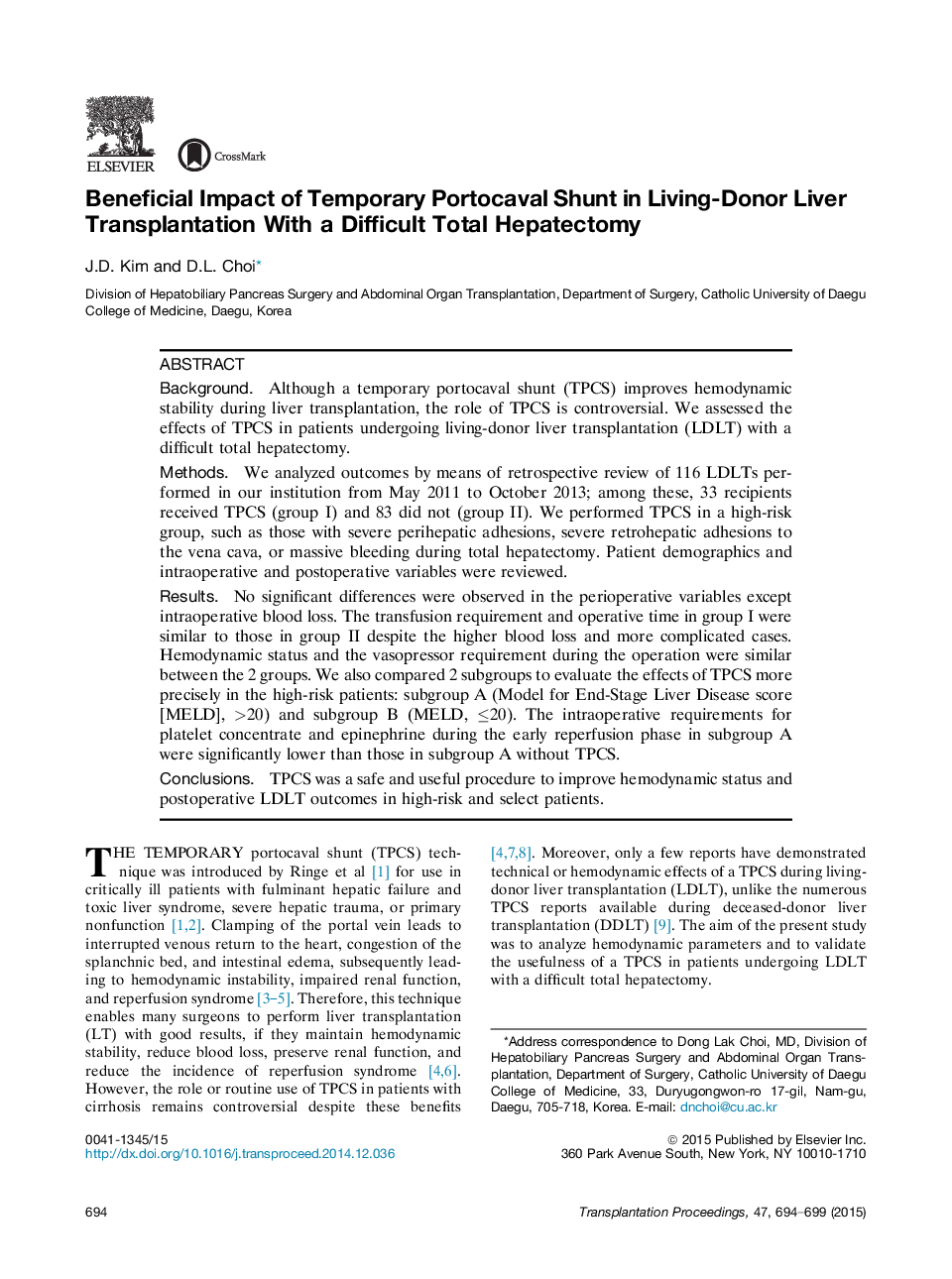| Article ID | Journal | Published Year | Pages | File Type |
|---|---|---|---|---|
| 6247840 | Transplantation Proceedings | 2015 | 6 Pages |
â¢We analyzed outcomes on LDLTs performed in our institution according to temporary portocaval shunt (TPCS).â¢We examine differences for demographics and perioperative variables.â¢Hemodynamic status in the TPCS group was not different despite more complicated cases.â¢TPCS was a useful procedure to improve hemodynamic status and postoperative outcomes.â¢This procedure facilitates an easier total hepatectomy technically.
BackgroundAlthough a temporary portocaval shunt (TPCS) improves hemodynamic stability during liver transplantation, the role of TPCS is controversial. We assessed the effects of TPCS in patients undergoing living-donor liver transplantation (LDLT) with a difficult total hepatectomy.MethodsWe analyzed outcomes by means of retrospective review of 116 LDLTs performed in our institution from May 2011 to October 2013; among these, 33 recipients received TPCS (group I) and 83 did not (group II). We performed TPCS in a high-risk group, such as those with severe perihepatic adhesions, severe retrohepatic adhesions to the vena cava, or massive bleeding during total hepatectomy. Patient demographics and intraoperative and postoperative variables were reviewed.ResultsNo significant differences were observed in the perioperative variables except intraoperative blood loss. The transfusion requirement and operative time in group I were similar to those in group II despite the higher blood loss and more complicated cases. Hemodynamic status and the vasopressor requirement during the operation were similar between the 2 groups. We also compared 2 subgroups to evaluate the effects of TPCS more precisely in the high-risk patients: subgroup A (Model for End-Stage Liver Disease score [MELD], >20) and subgroup B (MELD, â¤20). The intraoperative requirements for platelet concentrate and epinephrine during the early reperfusion phase in subgroup A were significantly lower than those in subgroup A without TPCS.ConclusionsTPCS was a safe and useful procedure to improve hemodynamic status and postoperative LDLT outcomes in high-risk and select patients.
